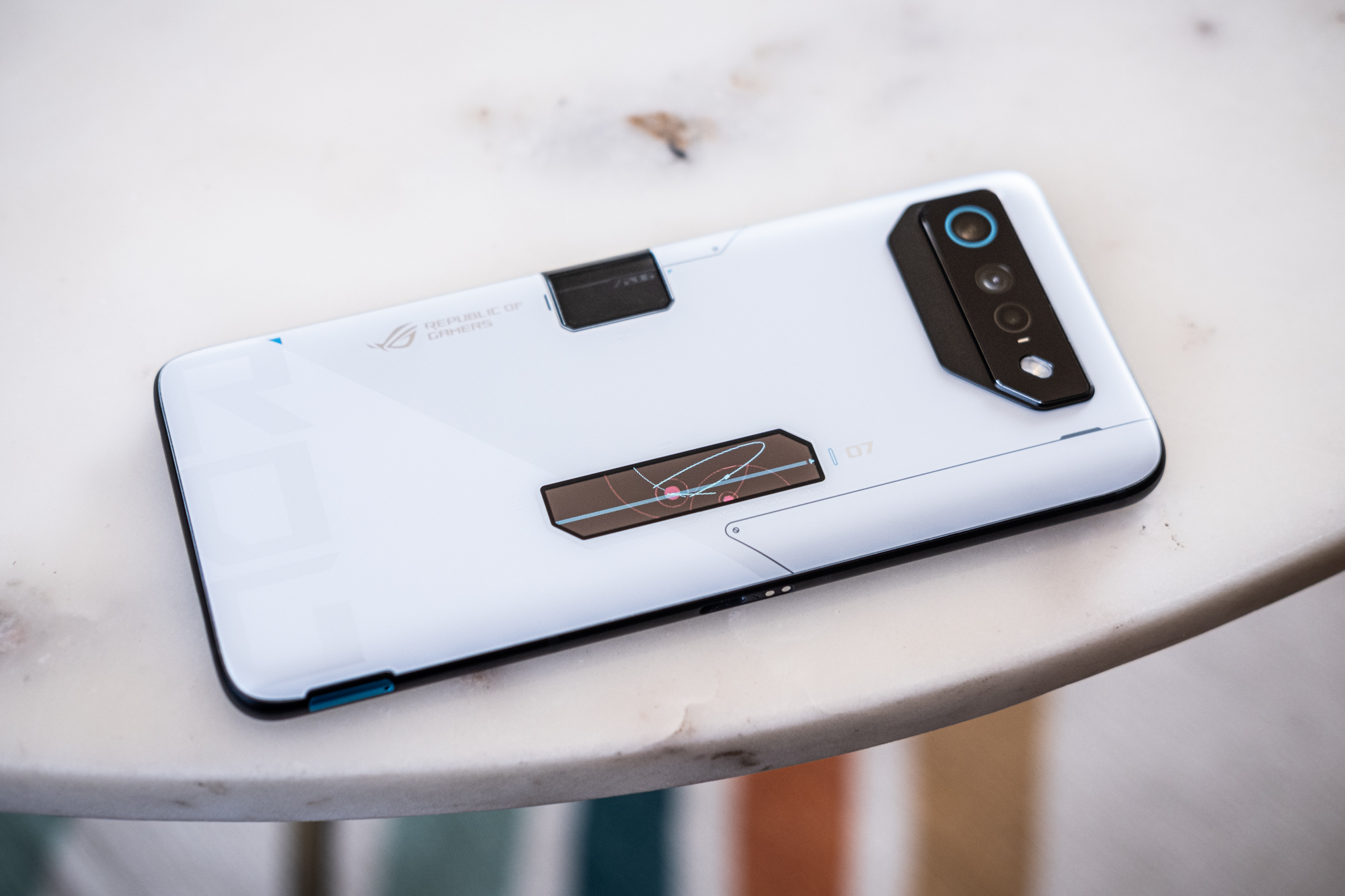The best gaming phone 2023
Gaming on phones has been popular since the days of Snake, long before the likes of Candy Crush Saga took over our commutes. But these days smartphones are becoming viable gaming devices for more than simple distractions on the go, and mobile gaming is a giant industry in its own right.
Eventually cloud streaming will level the performance playing field, but until then committed mobile gamers need to pick up smartphones designed for the purpose. The best gaming phones deliver maxed out performance, great displays and audio, and often designs that incorporate extra trigger buttons or other gaming-specific features.
The big brands here aren’t the same ones you’ll see elsewhere. Asus ROG undoubtedly leads the pack – so long as you’re happy to pay a premium for the brand – while Xiaomi’s Black Shark line and ZTE’s Red Magic series provide serious competition.
You may instead find that you prefer a ‘regular’ phone, albeit one with top performance, so we’ve included a few of those in this ranking too. That includes the iPhones we think are best suited to gaming, along with a few Android options that prioritise performance without going all-in on the gamer aesthetic.
Best gaming phone 2023
1. Asus ROG Phone 7 Ultimate – Best gaming phone

Pros
- Top-tier performance
- Excellent battery life
- Stunning display
- Impressive cooling system
Cons
- Very expensive
- Big and bulky
The ROG Phone 7 Ultimate is pretty much what it sounds like: the ultimate gaming phone.
The latest generation of Asus gaming phone is powered by the Snapdragon 8 Gen 2, with 16GB of RAM and 512GB storage as standard. The 6.78in AMOLED display packs a market-leading 165Hz refresh rate, and built-in vapour cooling is supplemented by an optional clip-on cooler with its own built-in subwoofer to amplify audio too.
What makes the Ultimate stand out from the regular ROG Phone 7 is the return of the small ‘ROG Vision’ display on the back for notifications and custom animations, plus the ‘AeroActive Portal’ cooling flap, which activates to improve airflow even further when the cooler is clipped on.
Read our full
Asus ROG Phone 7 Ultimate review
2. Red Magic 8 Pro – Best value 8 Gen 2
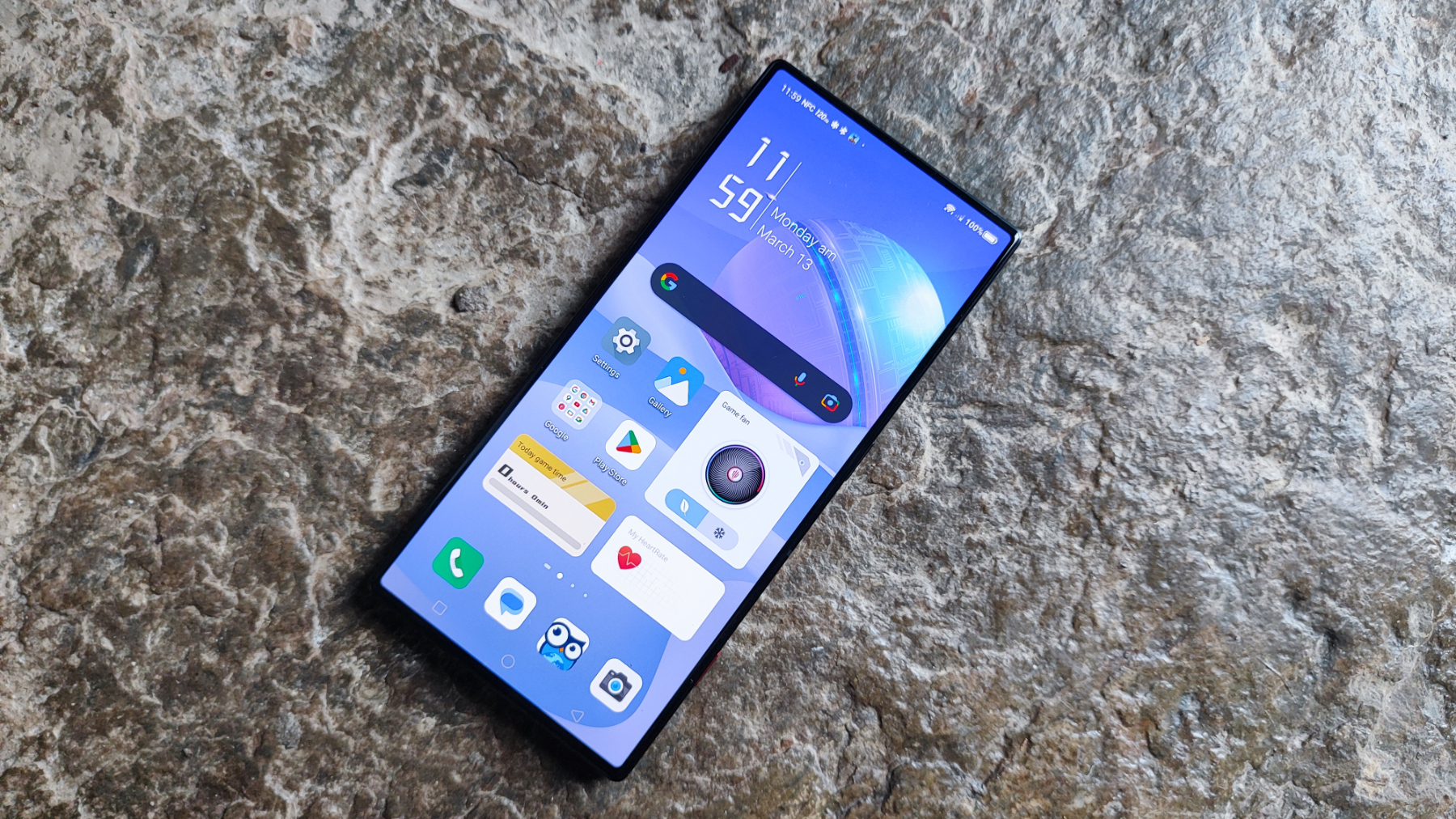
Pros
- Great performance
- Impressive battery life
- Decent cameras
- Built-in fan
Cons
- No waterproofing
- No wireless charging
- Rubbish selfie camera
Price When Reviewed:
$649
The Red Magic 8 Pro is an excellent affordable option if you want a dedicated gaming phone outfitted with the latest chipset on the market, the Snapdragon 8 Gen 2.
You get all of that silicon’s power, paired with 12GB of RAM and 256GB storage, for a price far below an Asus ROG Phone.
There are small downgrades to make, with no sign of flagship niceties like waterproofing or wireless charging. The use of an under-display selfie camera helps keep the 8 Pro compact and gives you a gorgeous full-screen experience, but again there’s a trade-off: your actual selfies won’t be all that great, with a soft, over-processed look to them.
The screen refresh rate is also capped at 120Hz, which is great, but below some other gaming options – including last year’s Red Magic 7, which you’ll also find on this list below. The flip side of that is a touch input rate of 960Hz – i.e. it can detect touches 960 times a second, the fastest of any phone out there.
This may lack the flash and polish of the Asus options, but for this price it’s hard to argue.
Read our full
Redmagic 8 Pro review
3. Motorola Edge 40 Pro – Best regular phone for gaming

Pros
- 165Hz OLED display
- Fantastic performance
- IP68 rating
- Phenomenal battery life
Cons
- No gaming-specific hardware
Price When Reviewed:
Not available in the US
Though the Motorola Edge 40 Pro doesn’t look like much of a gaming phone, the flagship has a surprise or two up its sleeves.
It’s powered by Qualcomm’s Snapdragon 8 Gen 2 with 12GB of LPDDR5 RAM and up to 512GB of storage, making it an impressive device able to take on dedicated gaming phones. There’s also the 6.7in AMOLED display to consider, with a gaming-grade 165Hz refresh rate – pretty much the only non-gaming phone to go that fast.
Gaming prowess aside, it also boasts absurdly fast 125W charging that’ll get you a full charge in well under 30 mins, and a triple rear camera that’s better than any you’ll find on a gaming phone. Oh, and did we mention that the battery lasts for two full days of typical use?
So, while you might not get built-in triggers or cool gaming-focused software enhancements, you’ll certainly get all the benefits of a flagship smartphone, plus the power you need to play.
Read our full
Motorola Edge 40 Pro review
4. Red Magic 7 – Great for display quality

Pros
- 6.8in 165Hz OLED display
- 720Hz touch sample rate
- Great performance
Cons
- Heavy build
- Hit-and-miss battery life
- Snapdragon 8 Gen 1
Price When Reviewed:
From $629 | Model reviewed $799
Nubia’s Red Magic smartphones have a reputation as having some of the best gaming-focused displays around, and that’s just as true with the latest in the collection, the Red Magic 7.
At its heart is a fast 6.8in 165Hz OLED panel with an impressive 720Hz touch sample rate that beats practically every other smartphone on the market. Though you might not notice much of a difference in real-world performance, it’ll certainly satisfy the need for gamers to have the best of the best.
That’s paired with the flagship specs including Qualcomm’s Snapdragon 8 Gen 1, up to 18GB of RAM and 256GB of storage, and an updated three-fan cooling system to keep things running smoothly during longer gaming sessions.
There’s also a plethora of gaming features including side-mounted touch-based shoulder triggers, advanced haptic feedback and the ability to control performance on a per-game basis, and it’s all presented in Red Magic’s ‘Game Space’ mode.
The only real disappointment is battery life: it’s smaller than that of its predecessor at a rather average 4500mAh, and combined with a 165Hz display it drains much more quickly.
Read our full
Red Magic 7 review
5. Asus ROG Phone 6 – Best of last year
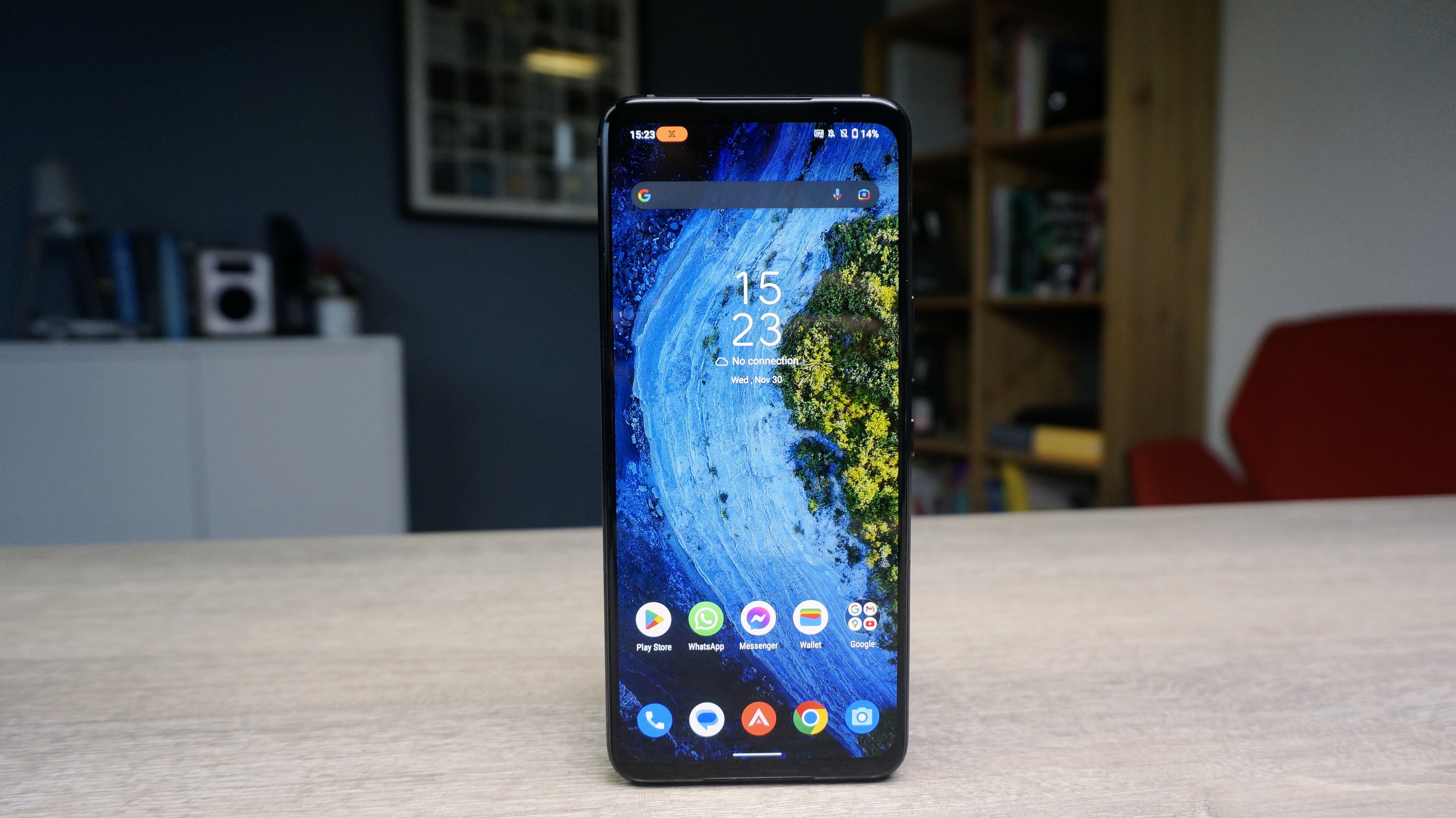
Pros
- Stellar performance
- Stunning display
- Solid battery life
- Surprisingly good cameras
Cons
- Can run hot without fan
- No wireless charging
- Only two years of updates
Price When Reviewed:
From $999.99 | Model reviewed $1,099.99
We haven’t yet reviewed the regular ROG Phone 7, but the 6 remains a great choice for most people.
It excels at the fundamentals, delivering stellar performance, a stunning display, and great battery life. With decent cameras, two USB-C ports, and even a headphone jack, there’s a lot to like here.
However, it’s not perfect, with a lack of wireless charging and poor software update commitment the most prominent problems. You’ll also need to connect a fan for long gaming sessions.
But none of these are dealbreakers for most people, and the ROG Phone 6 provides such a well-rounded experience elsewhere. If you’re serious about gaming on your phone but just want the best core experience, this is the phone to buy.
Read our full ROG Phone 6 review
6. Samsung Galaxy S23+
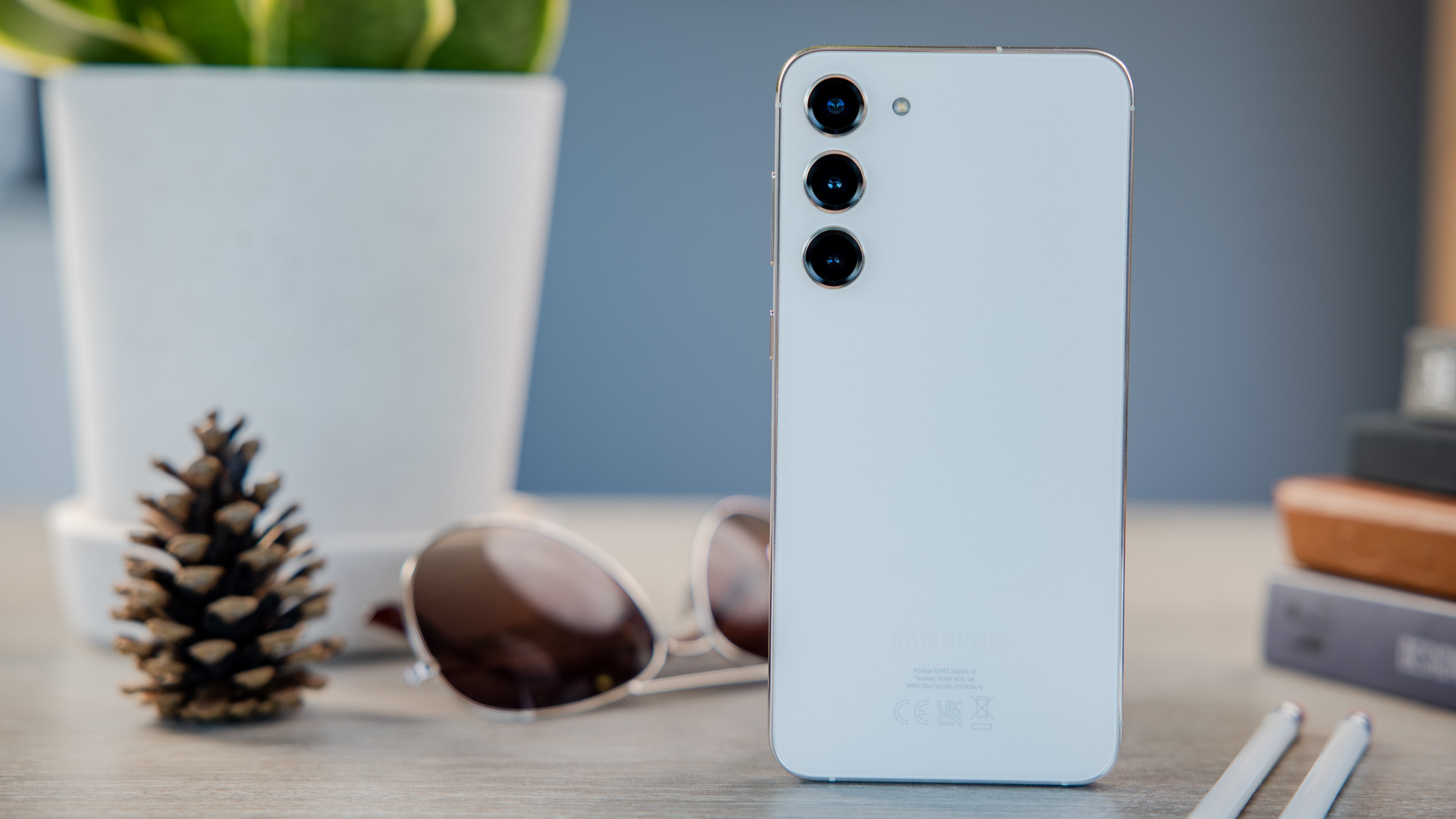
Pros
- Bright, sharp, flat screen
- Great battery life
- Five years of software support
- Snapdragon 8 Gen 2 power
Cons
- Expensive
- 45W charging a little slow
- Software takes some tweaking
Price When Reviewed:
From $999
This year, for the first time, the latest Samsung Galaxy flagships ship with Qualcomm Snapdragon silicon worldwide.
That makes the S23+ a great choice for gaming, especially since it and the other S23 models in fact use a very slightly overclocked version of the 8 Gen 2 chip that gives it a slight boost in single-core performance compared to rivals. That makes this one of the fastest Android phones around, and as a top-tier flagship it also benefits from a great display, long-term software support, and fantastic cameras.
You might also like the regular S23, but the bigger display of the Plus model is more naturally suited to gaming. The S23 Ultra is bigger still, but much more expensive – and you’re mostly paying for enhanced camera features and S Pen stylus support, making the Plus the sweet spot for most gamers.
The main downside is the sluggish wired charging, which just means that if you burn through the battery in a long play session, it’ll take a little longer to top it back up.
Read our full
Samsung Galaxy S23 Plus review
7. Black Shark 5 Pro

Pros
- Strong gaming performance
- Fast, responsive 144Hz display
- Built-in magnetic triggers
- Great main camera
Cons
- Fixed focus on ultrawide camera
- Can get hot over prolonged sessions
- JoyUI takes some getting used to
Price When Reviewed:
From $799 | Model reviewed: $899
he Black Shark 5 Pro might not redesign the wheel, but it ticks all the boxes for gamers: it has a buttery smooth 144Hz refresh rate, top-level performance, gaming-specific features like magnetic triggers and gesture-activated shortcuts plus much more.
The 120W charging, while unchanged, provides some of the snappiest charging times around achieving a full 100% charge in under 30 minutes, though the downside is a smaller battery than alternatives.
Unlike the touch-based triggers of some rivals, the Black Shark 5 Pro has magnetic triggers that pop up from the body of the phone for a more traditional controller experience, making for a great portable gaming experience without the need to carry additional accessories.
Though not usually a focus for gaming phones, the Black Shark 5 Pro has an impressive 108Mp rear-facing camera that’s capable of taking decent snaps, though the decision to include autofocus capabilities to the macro lens and not the more popular 120-degree ultra-wide is an odd decision that leaves some ultrawide shots looking a little soft.
It is more expensive than the competing Red Magic 7 Pro, but the magnetic triggers, in particular, make the Black Shark 5 Pro a compelling gaming smartphone that negates the need for a controller in many games.
Read our full
Black Shark 5 Pro review
8. iPhone 14 Pro Max
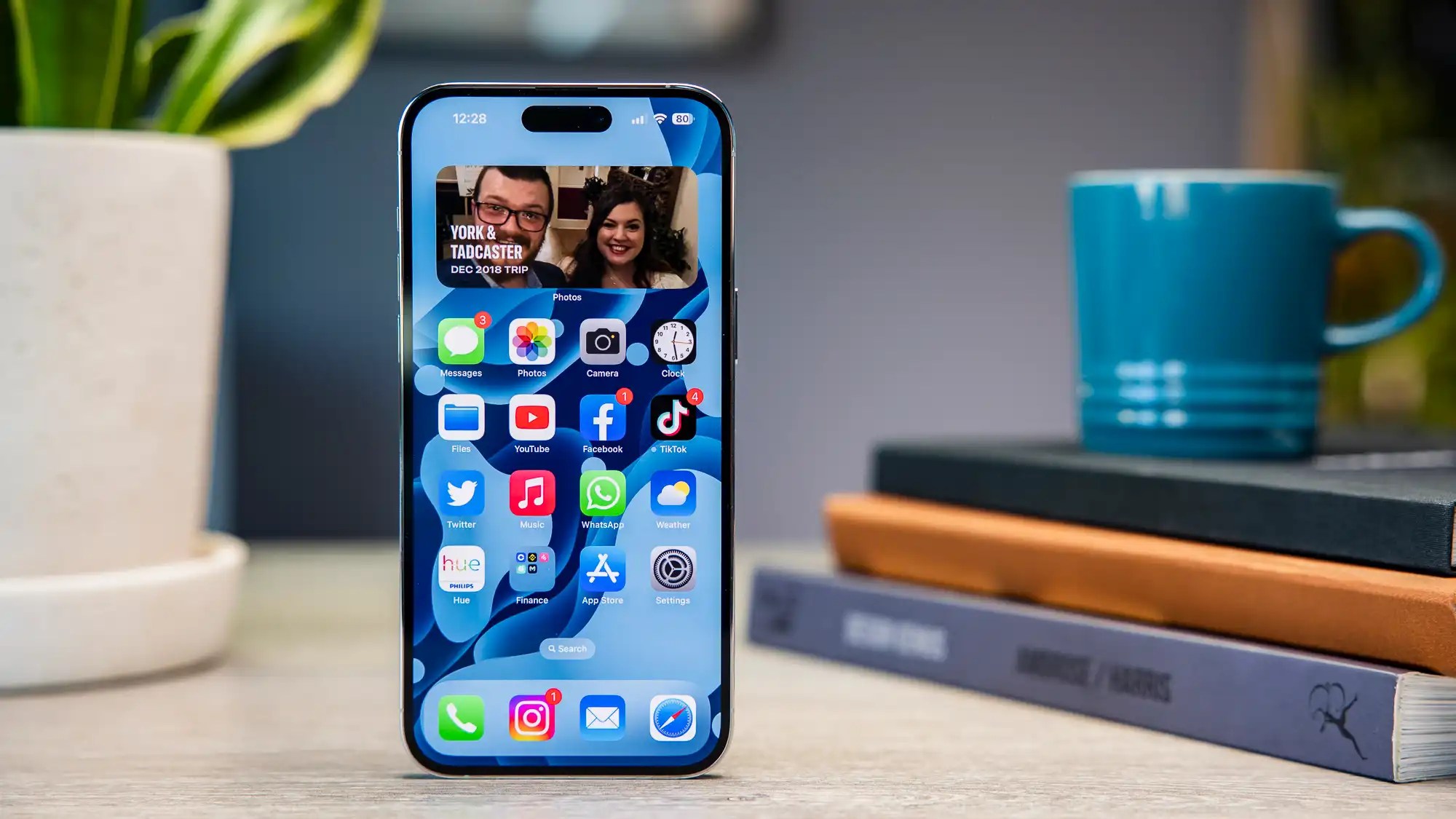
Pros
- Powerful A16 Bionic chipset
- Superb battery life
- 6.7in 120Hz display
Cons
- Expensive
- No charger in the box
Price When Reviewed:
From $1,099
When it comes to gaming on iOS, the 6.7in iPhone 14 Pro Max is the one to beat. Apple’s A16 Bionic is one of the most powerful chipsets on the market right now and can handle just about anything you can throw at it without a hint of stutter or lag – and our benchmarks back that up too.
Importantly, the iPhone 14 Pro Max sports a gorgeous Super Retina XDR display that makes games look incredible on the iPhone, whether they’re free-to-play titles or the latest Apple Arcade exclusives.
It’s also one of the few iPhones to make the jump to a variable 120Hz refresh rate, offering the buttery-smooth refresh rate – and improved response time – that make Android rivals so strong.
There’s also up to a whopping 1TB of storage available, so you can carry an entire library of mobile games in your pocket, and the battery life is among the best of any iPhone for longer play sessions.
The catch? It’s on the expensive side, and you don’t even get a charger in the box.
9. Poco F4 GT

Pros
- Incredibly fast 120W charging
- Magnetic shoulder buttons
- Restrained design
Cons
- Middling battery life
- Snapdragon 8 Gen 1
- No gamer software/accessories
Price When Reviewed:
Unavailable in the US
The Poco F4 GT is an attempt to build a gaming phone that could be just as appealing to non-gamers.
The F4 GT packs the hardcore hardware you’d expect: a Snapdragon 8 Gen 1 chipset, 120Hz AMOLED display, and up to 12GB of RAM – not to mention almost absurdly fast 120W charging. It even includes pop-up magnetic shoulder buttons similar to those found in the Black Shark 5 Pro.
But the restrained design means this won’t scream ‘gamer’ to everyone who sees it, and the shoulder buttons double up with extra functions outside of games – a camera shutter button, for example.
Read our full
Poco F4 GT review
10. Red Magic 7S Pro
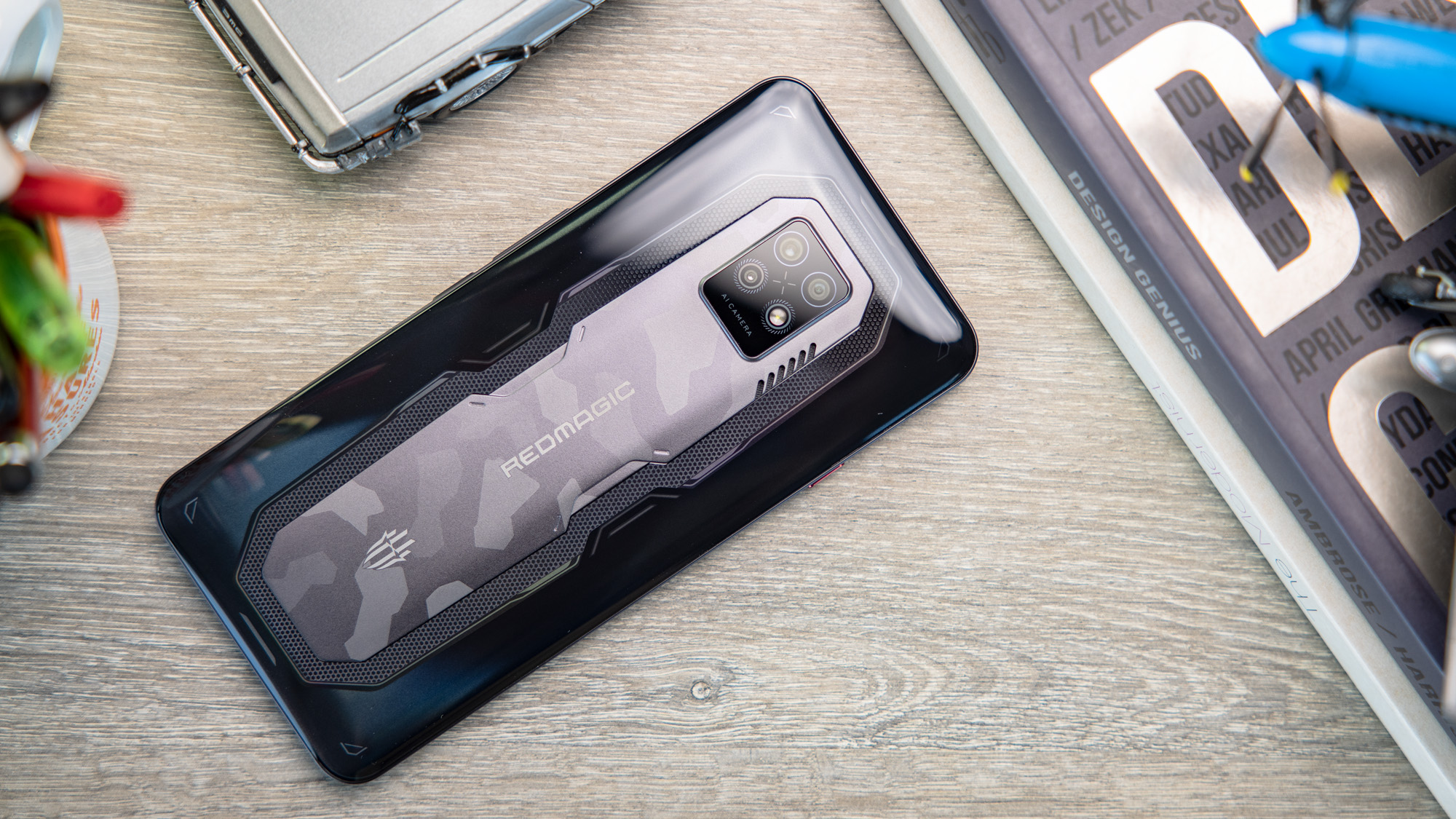
Pros
- Record 960Hz touch-sampling rate
- Under-display selfie camera
- Impressive battery
Cons
- Heavy build
- Only guaranteed one Android version update
- ‘Only’ 120Hz refresh rate
Price When Reviewed:
From $729
The Red Magic 7S Pro is an unusual phone. It’s a small upgrade on the 7 Pro – chiefly to include the newer Snapdragon 8+ Gen 1 chip – but it’s also not a clear upgrade on the regular Red Magic 7 in every respect, and in fact we’d recommend that phone or the more recent 8 Pro to most people.
The changes here are mostly in the display. The first is that the 7S Pro packs the same 960Hz touch input of the 8 Pro, but along with it the cap to 120Hz refresh rate. Similarly, it has that under-display selfie camera, which looks great but doesn’t always deliver results.
This packs plenty of power and delivers on battery life too, but with a hefty price tag consider carefully if you really need the upgrade from the Red Magic 7 – or if you’d be happy with the slightly cheaper Red Magic 7 Pro, which is essentially the same phone with the older Snapdragon 8 Gen 1.
Read our full
Nubia Red Magic 7S Pro review
Buying advice for gaming phones
What is a gaming phone?
Put simply, a gaming phone is a phone designed for gaming.
That usually means a focus on performance, with a powerful chipset and lots of RAM to ensure it can play the latest mobile games smoothly. Most gaming phones also have big, responsive displays and powerful speakers – or even a headphone jack.
Some go further than that though, with distinctive designs built for gaming. That can mean extra cooling and larger batteries to ensure performance in long gaming sessions, built-in buttons and triggers to supplement touch controls, and in some cases even tricks like side-mounting the selfie camera and charging port to better suit using the phone in landscape.
The main downsides are that gaming phones tend to be bigger, bulkier, and heavier than most other options. They also usually have distinct ‘gamer’ designs, often including RGB lighting or extra displays, which may not be to your taste.
Can I use a ‘normal’ phone for gaming?
Absolutely. Dedicated gaming phones have their place, but the actual performance gap between a gaming phone and a top ‘regular’ flagship is pretty small.
Gaming phones use the same chipsets as other high-end devices, they simply bolster them with improved cooling, bigger batteries, and usually more RAM. That can give a slight edge while gaming, but in practice any high-end iPhone or Android device will keep up.
So if you don’t like the look of most gaming smartphones, or can’t imagine giving up your Pixel camera just for CoD, you don’t have to.
Can’t I just stream games over the cloud?
Cloud gaming is better than ever, but it’s not there yet. While numerous cloud game streaming services are available, they’re really only suited to single-player gaming – and even then, only while you’re on Wi-Fi or reliable 5G.
Since many mobile gamers prefer to play competitive online titles, cloud gaming isn’t really an option, as it introduces too much lag. The cloud also won’t work for you if you don’t have reliable access to fast internet.
That’s why, for now at least, there’s still a space for dedicated gaming hardware that offers the power necessary to max out your performance.
What specs do I need for gaming?
There are a few key specs to look out for in a modern gaming phone.
The main one is the core chipset. Look for a Qualcomm Snapdragon chip that begins in ‘8’ – the latest are the 8 Gen 2 and 8+ Gen 1, but the previous 8 Gen 1 will still do great too – or a similarly powerful MediaTek Dimensity chip like the 9000 or 9200. You’ll also want at least 8GB of RAM to make the most of the chip – more is better, but there are diminishing returns beyond 12GB or so.
The display matters too. You’ll probably want a fairly large screen to game on – at least 6.5in – and look for one with a 120Hz refresh rate or higher, and the fastest touch response rate you can find. Spending more for AMOLED tech over LCD will deliver better contrast and colours, but don’t worry too much about resolution – gaming phones rarely go beyond Full HD.
Which gaming phone accessories should I buy?
One extra perk of buying a gaming phone is that they usually offer a range of accessories to go with them. These vary by manufacturer, so there’s no hard-and-fast rule on what to pick up.
Strap-on coolers and fans are a good way to maintain performance and reduce long-term damage to the phone’s chip from overheating. If you find it fiddly to play on the touchscreen, you might also want to grab a Bluetooth controller. As with any phone, a protective case and screen protector are always a good bet too.
Related stories for further reading
- Best phone deals
- Best SIM-only deals
- Best battery life phones
- Best big phones
- Best new phones coming soon
Related Posts

Technical Analysis: 4 Stocks with signs of death crossovers to keep an eye on

HDFC Bank & 3 other fundamentally strong stocks trading above 200 DMA to keep an eye on

Falling Channel Breakout: Multibagger NBFC Stock Shows Bullish Momentum on Daily Chart

4 Fundamentally strong stocks to buy for an upside potential of up to 36%; Do you hold any?

